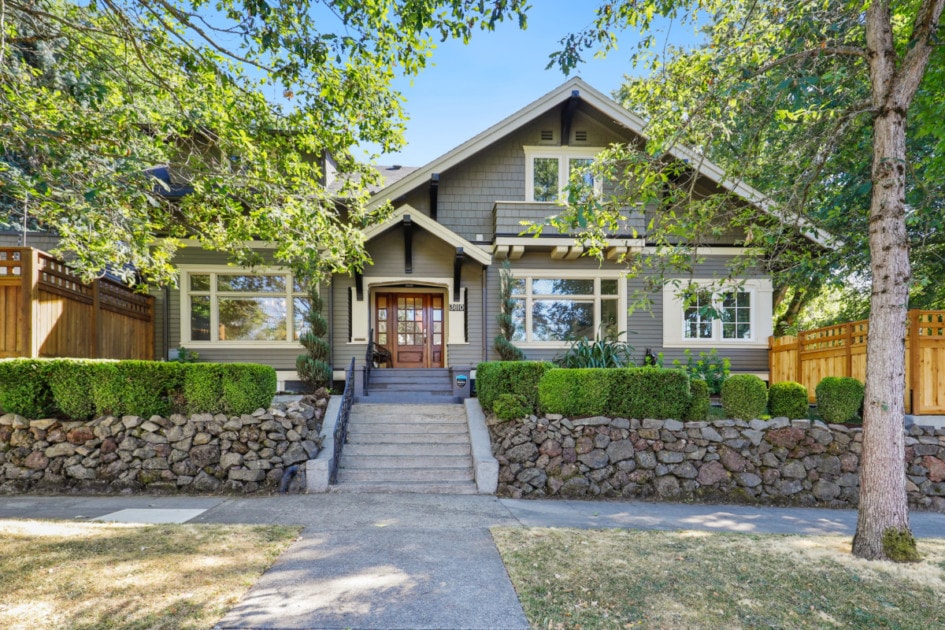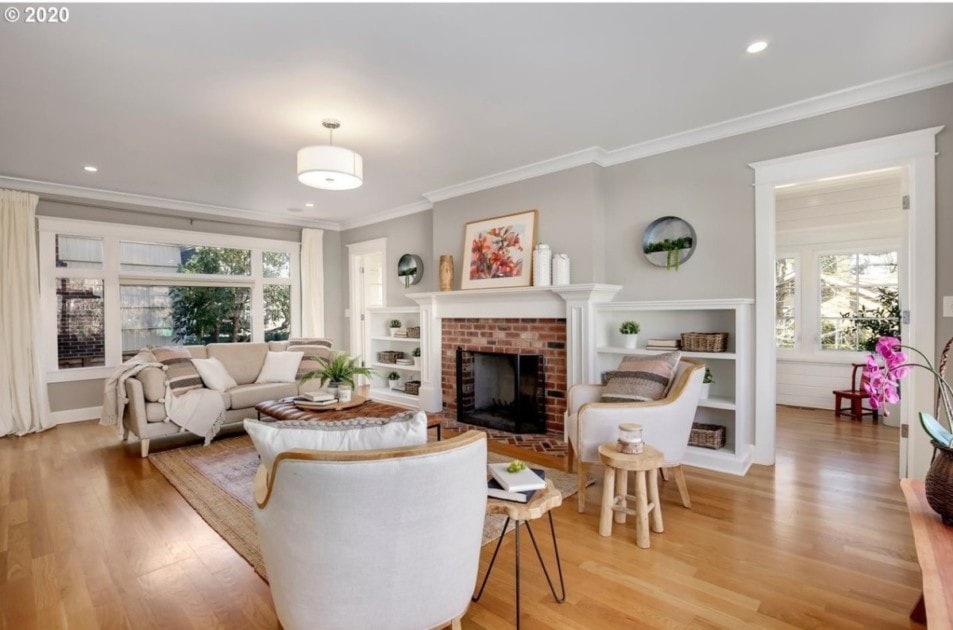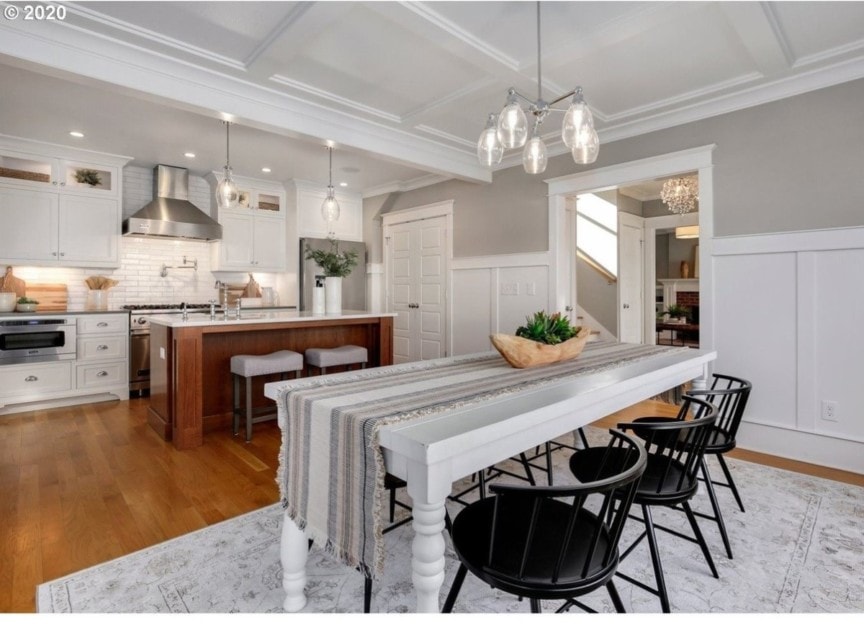What is a Mortgage Buydown? Lower Interest Rates with this Strategy
When you decide to buy a house, you’re not only committing to paying for the purchase price of the home but also the interest rate on your mortgage loan – the cost of borrowing money from your mortgage lender.
With today’s high mortgage rates, many homebuyers are seeing their purchasing power plummet as their potential monthly payments skyrocket. And while it may be tempting just to wait to buy until mortgage rates are low again, that’s not always an option. Luckily, one option to consider is to buy down your mortgage.
By paying a bit more upfront, you can ensure a lower mortgage rate and keep more money in your pocket each month.

What is a mortgage buydown?
A “mortgage buydown” is a financing agreement where the buyer, seller, or builder will pay mortgage points, also known as discount points, at closing to obtain a lower interest rate. This one-time fee will cover the difference between the standard rate and the new rate.
Buying down a mortgage can be done in several ways and can look different depending on your lender and whether you want a permanent or temporary mortgage buydown rate.
What does a permanent mortgage buydown look like?
With this option, you’ll buy a lower rate for the entirety of the loan term at closing from your lender through discount points. Unlike a temporary mortgage buydown, the rate will never increase.
What does a temporary mortgage buydown look like?
With this arrangement, your mortgage interest rates will stay low for a period of time and eventually increase. You’ll see structures of temporary mortgage buydowns referred to as a “3-2-1 buydown” or a “2-1 buydown,” for example. We’ll cover what each arrangement looks like later.
How much does it cost to buy down a mortgage rate?
Each mortgage point a borrower pays usually equals 1% of the loan amount and typically reduces your interest rate by 0.25%. For example, one point would lower the mortgage rate from 6% to 5.75%. However, the amount each discount point lowers the rate can vary between lenders.
Let’s say a mortgage lender offers you, the borrower, the ability to reduce the interest rate by 0.25% in exchange for buying one point. So, if your loan amount is $500,000 and the interest rate is 6%, the borrower is able to lower their interest rate to 5.75% with one discount point by paying $5,000 (1% of $500,000).

Different ways to buy down a mortgage
There are three common arrangements for temporary mortgage buydowns: a “3-2-1 buydown”, a “2-1 buydown”, and a “1-0 buydown.” Below is an overview of how each works.
A 3-2-1 buydown
A 3-2-1 buydown allows the borrower to pay lower interest rates for the first three years of the loan. In the first year, the interest rate is 3% less than the current rate, increasing by a percentage point each year for the next two years. For the fourth year, the rate will match the rate you locked in at the start of your mortgage.
Let’s say a buyer qualifies for a 30-year mortgage loan at an interest rate of 6%. If the buyer decides they want to lower the interest rate for three years with a 3-2-1 buydown, their schedule will be as follows:
- The buyer will pay an interest rate of 3% in the first year.
- The buyer will pay an interest rate of 4% in the second year.
- The buyer will pay an interest rate of 5% in the third year.
- From years 4-30, the buyer will pay the full 6%, unless they decide to sell or refinance.
Review the chart below to see how a 3-2-1 mortgage buydown would impact the buyer’s monthly mortgage payment on a $400,000 30-year loan with an interest rate of 6%.
| Year | Interest Rate | Monthly Payment | Monthly Savings | Annual Savings |
|---|---|---|---|---|
| 1 | 3% | $1,686 | $712 | $8,544 |
| 2 | 4% | $1,910 | $488 | $5,856 |
| 3 | 5% | $2,147 | $251 | $3,012 |
| 4-30 | 6% | $2,398 | $0 | $0 |
The number of mortgage points charged for the buydown will vary from lender to lender. However, you’ll find that the buydown cost is typically about the same amount the buyer will save in interest. Using the example above, the mortgage buydown cost around $17,412.
A 2-1 buydown
A 2-1 mortgage buydown is similar to the 3-2-1 structure, except the discounted rate is only for the first two years of the loan’s term. This would give the buyer an interest rate that is 2% less than the standard rate in the first year and 1% less in the second year.
Using the same example above, taking a $400,000 30-year loan with a standard interest rate of 6%, let’s look at how a 2-1 buydown would play out.
| Year | Interest Rate | Monthly Payment | Monthly Savings | Annual Savings |
|---|---|---|---|---|
| 1 | 4% | $1,910 | $488 | $5,856 |
| 2 | 5% | $2,147 | $251 | $3,012 |
| 3-30 | 6% | $2,398 | $0 | $0 |
In the first two years of the loan term, the buyer will save approximately $8,868 in interest. Knowing this, we can expect the cost of the 2-1 buydown to be around the same.
A 1-0 buydown
A 1-0 buydown is a 1% reduction in interest rates in just the first year. Check out the chart below to see how this structure pans out throughout a $400,000 30-year loan.
| Year | Interest Rate | Monthly Payment | Monthly Savings | Annual Savings |
|---|---|---|---|---|
| 1 | 5% | $2,147 | $251 | $3,012 |
| 2-30 | 6% | $2,398 | $0 | $0 |
Evenly Distributed Interest Rate Reductions
If a buyer prefers to reduce their interest for the life of the loan, they can choose to purchase more points by paying a larger upfront cost. By doing this, the interest rate and the buyer’s mortgage payments won’t increase.
The total buydown cost will be higher than buying down the mortgage for the first two or three years. For example, if a buyer chooses to buy down the mortgage to 5% for all 30 years, their monthly payments would be $2,147, saving $3,012 per year.
Use a monthly mortgage calculator for an estimated monthly payment for varying interest rates.
Who can purchase a mortgage buydown?
While the buyer will ultimately benefit from a mortgage buydown, sellers and builders can also choose to purchase discount points to lower the buyer’s interest rate.
Cover the cost yourself
A mortgage buydown is typically negotiated between a buyer and their lender. If you have additional cash after budgeting for your downpayment, you can use this money to buy mortgage points upfront in return for a lower interest rate.
Ask the seller to pay for it
If a seller needs to sell their home quickly – perhaps their offer on another home was accepted, or they need to move by a specific date – they may offer to pay for a mortgage rate buydown as an incentive to buy their home. If this is the case, the seller will make a one-time deposit into escrow or pay points over the entirety of the loan as part of seller concessions, or the closing costs the seller has agreed to pay. This money provides the mortgage lender with the funds to lower the buyer’s interest rate so they can more easily afford the home. However, the seller may try to tack on the cost of buying down the mortgage to the purchase price of the house to make up for the expense.
Use a builder closing cost incentive
Homebuilders may offer financing incentives for buying their newly built properties. You can use the funds to cover closing costs, including buying down your rate.
Use gift funds
If a family or close friend has gifted you funds, you can apply this money to a mortgage rate buydown. However, there are restrictions on the amount you may receive as a gift without incurring a gift tax.

Will buying down your mortgage pay off?
A mortgage buydown is most advantageous when a seller or builder offers to cover the cost of buying down your mortgage. However, there are certain circumstances where mortgage buydowns are still fitting if a buyer chooses to pay the points themselves.
If you plan to buy down your mortgage, you’ll need enough savings to afford the downpayment and closing costs while still having extra cash to cover your mortgage buydown. If this sounds like a good option for you, lowering the interest rate for the first few years or the life of the loan may be beneficial.
A mortgage buydown usually only makes sense if the buyer intends to own the home for an extended period of time and will reach the breakeven point, or the time it’ll take to recoup the cost of the discount points.
The breakeven point changes depending on your term, interest rate, and loan amount. Here’s how you calculate the breakeven point:
Breakeven point = (cost of the mortgage buydown) ∕ (monthly savings)
Review the chart below to see how a 2-1 mortgage buydown would impact the buyer’s monthly mortgage payment on a $400,000 30-year loan with a standard interest rate of 6% and a monthly mortgage payment of $2,495.
| Year | Interest Rate | Cost of Mortgage Buydown | Original Monthly Mortgage Payment | New Monthly Mortgage Payment | Monthly Savings |
|---|---|---|---|---|---|
| 1 | 4% | $32,000 | $2,495 | $2,104 | $391 |
| 2 | 5% | $16,000 | $2,495 | $2,294 | $201 |
| 3-30 | 6% | $0 | $2,495 | $2,495 | $0 |
In this scenario, you’ll reach the breakeven point after living in the house for 6.75 years:
Breakeven point = (cost of the mortgage buydown) ∕ (monthly savings)
Breakeven point = ($32,000 + $16,000) / ($391 + $201)
Breakeven point = $48,000 / $592
Breakeven point = 81 months or 6.75 years
If you decide to sell before you reach 6.75 years, you’ll lose money, but the longer you stay in the home, the more a rate buydown will pay off.
Consult your mortgage lender
Be sure to work with your mortgage lender to find the best mortgage buydown arrangement for you, or whether a mortgage buydown makes sense at all for your situation
Redfin does not provide legal, tax, or financial advice. This article is for informational purposes only and is not a substitute for professional advice from a licensed attorney, tax professional, or financial advisor.
The post What is a Mortgage Buydown? Lower Interest Rates with this Strategy appeared first on Redfin | Real Estate Tips for Home Buying, Selling & More.
